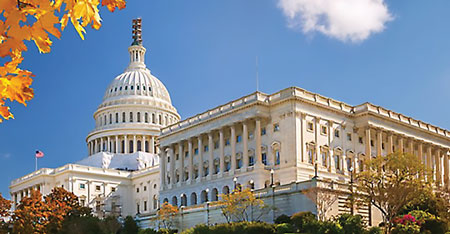
Legislators in the House and the Senate introduced legislation, the Raise the Wage Act, to raise the federal minimum wage $15.00 per hour by 2024 and annually increase the federal minimum wage in subsequent years. NFIB opposes H.R. 582, the Raise the Wage Act and will Key Vote H.R. 582 for the 116th Congress.
Small business owners know that more than doubling the federal minimum wage will lead to increased labor costs and tough choices. They must either increase the cost of their product or service, which in many cases is not feasible, or reduce labor costs elsewhere. The reduction in labor costs would be achieved through reduced jobs, reduced hours, and/or reduced benefits. None of these changes benefit employees.
NFIB opposes the Raise the Wage Act because 92 percent of NFIB members opposed its mandates. NFIB urges small business owners to contact their Members of Congress to oppose the Raise the Wage Act.
The NFIB Research Center recently released a study,“Economic Effects of Enacting the Raise the Wage Act on Small Businesses and the U.S. Economy,“ on the impact of the Raise the Wage Act on the economy and small businesses. The study found the following:
National Landscape: According to the NFIB Research Center’s economic forecast, the Raise the Wage Act would lead to massive output loss, job loss, and income reduction on a national scale.
Small Business Landscape: Small businesses would be particularly hurt by the Raise the Wage Act.
Industry-Specific Landscape: The employment reduction in retail, food service, and administrative support account for nearly one quarter of lost jobs.
...................................................................................................................................................................
Small business owners know that when cities and states raise the minimum wage, it often leads to increased labor costs and tough choices. To reduce costs following a minimum wage hike, employers are often forced to make difficult decisions such as cutting jobs, reducing employees’ hours, or reducing benefits.
NFIB members visited Washington, D.C., in July to talk about a bill to raise the federal minimum wage. In addition to the federal legislation, many local governments are considering similar plans to raise the minimum wage in cities and states across the nation.
NFIB research has shown this is a bad move for the small business economy, as does a recent study by the Congressional Budget Office. Here’s an update on where these laws stand across the country.
Over the years, proponents of a higher minimum wage have increasingly turned to ballot initiatives when they haven’t been able to secure victory through the legislature. Their focus also has broadened to include localities.
For example, several major cities–such as Seattle, Chicago, and San Francisco–have mandated minimum wage increases on their own, and Colorado recently passed legislation to allow local governments to establish their own minimum wages.
According to the National Conference of State Legislatures, 18 states began 2019 with higher minimum wages, either because of automatic cost-of-living increases (*) or previously approved legislation or ballot initiatives (^). However, state wages may differ depending on business size or gross earnings. If you own a business in California, Minnesota, Missouri, Montana, New York, or Ohio, visit your state’s government work force or labor website for details.
Additionally, Michigan’s minimum wage increased to $9.45 on Mar. 29. On July 1, Washington, D.C.’s minimum wage will increase to $14. Oregon’s minimum wage will increase to a standard rate of $11.25 for most of northwest Oregon, $11 for nonurban counties, and $12.50 for Portland Metro. Delaware’s minimum wage will increase to $9.25 on Oct. 1.
So far in 2019, six other states–Illinois, New Jersey, New Mexico, Connecticut, Nevada, Maryland–have passed new increases.
“The majority of our members are very concerned about the eventual impact the 80 percent wage hike will have because they know this will force all hourly wages to increase,“ said NFIB’s Illinois State Director Mark Grant.
“Even those who pay far more than minimum wage know that costs for other services and products are going to rise. Some are making plans to relocate part or all of their business to another state, while others are considering closing their business.“
Finally, while 32 total states have introduced legislation in 2019 to increase their minimum wage, two–Maine and New Hampshire–currently have active pending measures.
![]()